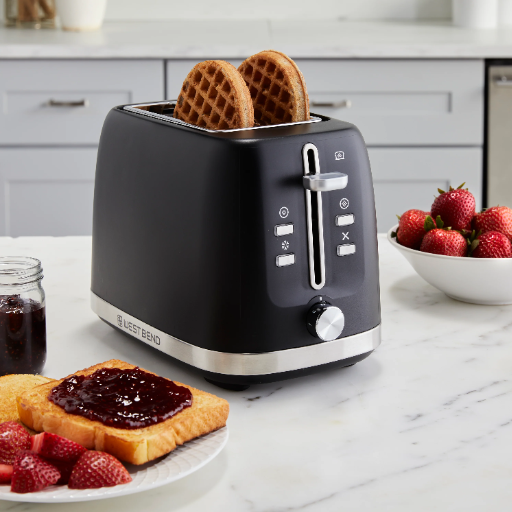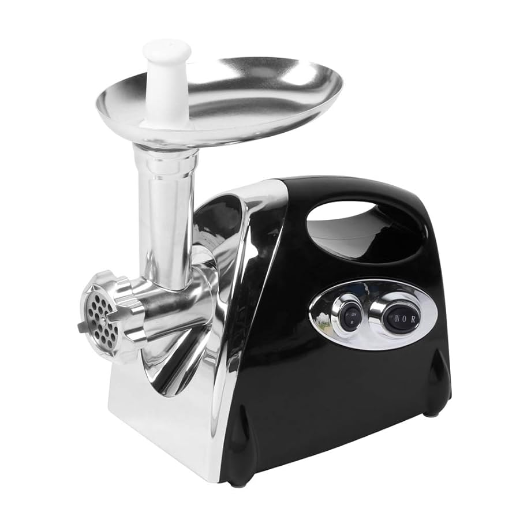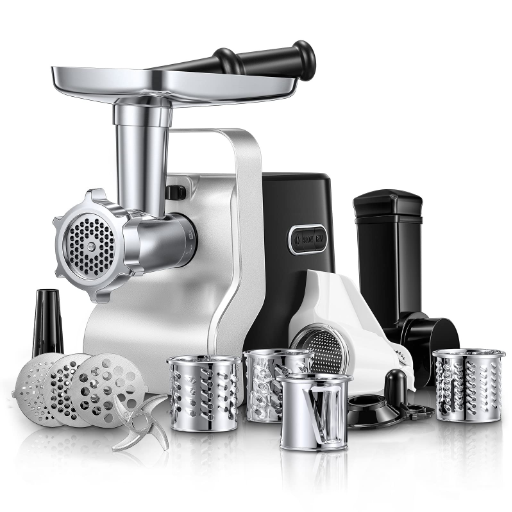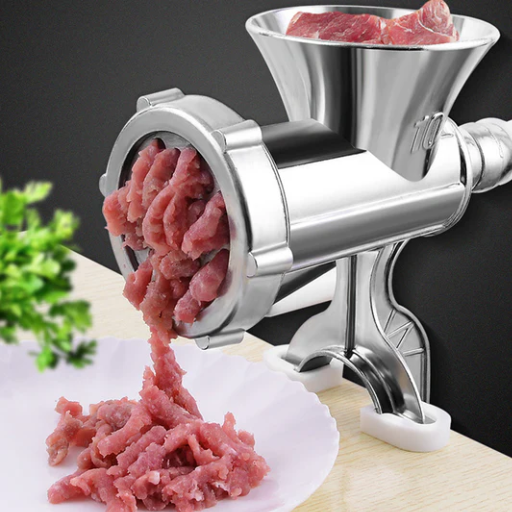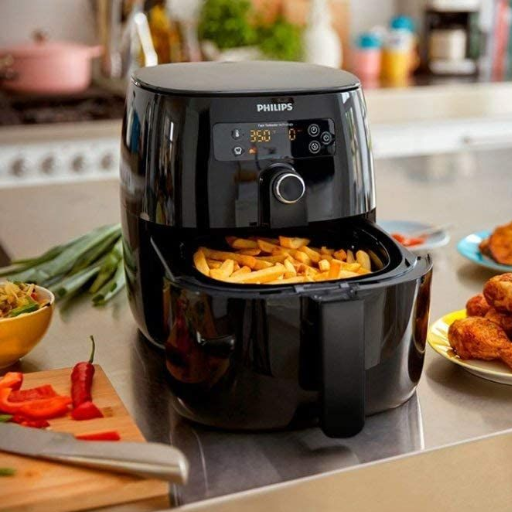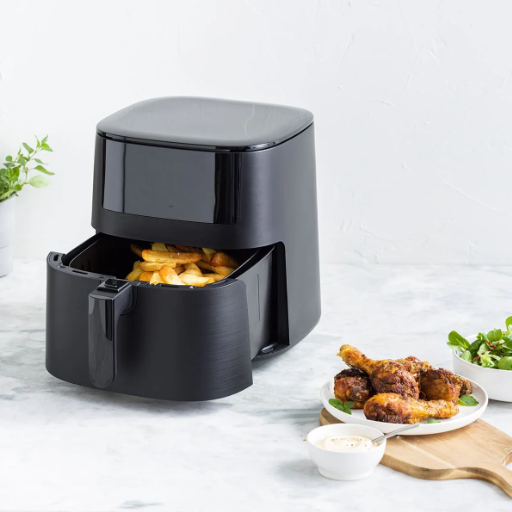Today, blenders are essential equipment in every kitchen since they help create smooth, uniform mixtures in minimal time. However, understanding the each part of a blender is critical to maximizing its use and ensuring its lifespan. Most importantly, understanding its structure helps when purchasing a blender and serves as an guide to helping a person’s specific needs. It will help hone in on the motor base, blade assembly, jar design, and control settings. Understanding the parts of a blender and the motor base will enhance a person’s purchasing decision, troubleshooting skills, and help achieve optimal blending results. This being said, anyone wanting to learn about flexible kitchen tools and devices, whether aspiring chefs or casual ones, will greatly benefit from this informative guide.
What Are the Main Blender Parts?

- Motor Base – The position where the motor is mounted; the heaviest part of the blender.
- Blade Assembly – The mechanical component which accomplishes the tasked blending of the food contents. A set of arms, each carrying a blade fixed to a rotor shaft.
- Blender Jar – The part where ingredients are kept. Jars vary in size and can be made from glass or stainless steel to fit diverse needs.
- Lid and Cap – The lid must securely hold the contents while the blender mixes to avoid spillage. The cap serves as both a measuring cup and a lid when ingredients need to be added later in the process.
- Control Panel – Speed and blending modes set to various recipes can be achieved with precision through buttons, dials, or touch controls.
Understanding the Blender Jar
The blender jar is one of the main constituents of the appliance because it contains all blending components that guarantee the blending process is safe and done well. They are usually made of materials such as BPA free plastic, glass, and stainless steel. Each material of the jar has its advantages. It is commonly known that glass jars do not stain or hold odors ensuring cleanliness and hygiene for long periods. Plastic jars made of polycarbonate are lightweight and do not shatter, making them suitable for high impact use. Meanwhile, stai ne steel jars are opaque but very strong, they hold temperatures exceptionally well both hot or cold making them ideal for hot and cold preparations.
As with any product, not only the material, but also the interior design of the jar is crucial. A lot of jars have contoured sides along with a tapered base that designed to promote vortex movement for better blending. Also, the jar has markings to allow measurements to a certain degree. Some versions comes with one inch and two inch markings for metric and imperial respectively ensuring global usage. The lid is attached to the jar allowing the closing of jars, they usually have a special self locking removable center cap to allow effortless addition of items when the blender is on.
From compact personal blenders, the standard jar sizes start at 32 ounces while commercial-grade models offer more than 64 ounces. This range of sizes allows the blenders to be used for everything from single-serve smoothies to large-batch soups or purees. Moreover, some blender jars with advanced features have specially designed tamper tools or even self-cleaning mechanisms due to innovations made to suit consumer demands.
The Importance of the Blender Blade
The blender blade is the most important part of the blender. Its function makes it central due to it determining to a great extent the uniformity and smoothness of the blended ingredients. Blender blades are made of high-end materials like stainless steel. This is mostly because stainless steel blends resist corrosion, cuts efficiently, and outlive other options in the long run. Due to these factors, blades are designed with the right positioning, shape, and angle so as to grant the user maximum blender regardless of the type of ingredients used. Higher-end models usually have multi-tiered blades, which add to the voracity with which tough ingredients like ice, nuts, or fibrous vegetables get blended. Some auxiliary features like sawtoothed edges and curved appendages to the blade have also been designed to deal with modern blending demands. Consumer expectations are constantly rising, which makes it necessary to improve home and commercial appliances for easy and fast producing of silky smoothies or coarse spices.
What is a Blender Gasket?
Located between the blender jar and the blade assembly, a blender gasket is an important sealing element. It is often made of food-safe rubber or silicone. Its main purpose is to form a seal that is liquid tight so that no liquid or ingredients escape the blender during the work process. The gasket’s function is to protect the seamless blending process from the spills caused by the high speeds of rotation of the blades, which are omnipotent in high-speed blending. These days, gaskets are made to resist exposure to varying temperature extremes, from hot soup to icy mixture for frozen drinks, without becoming stiff or weakened. Also, modern gaskets are also designed to be removeable thus making them easy to clean, which is critical for the hygiene and lifespan of the blender. Meeting these requirements, along with maintaining and replacing worn out parts, greatly improves devices with time.
How to Choose the Right Replacement Parts for Your Blender?

To find the right replacement parts for your blender, first identify the make and model of your blender, since compatibility is very important. Review the manufacturer’s documentation, like the user’s manual, for relevant part numbers and compatibility dates. If feasible, select parts from the original manufacturer, as these will guarantee fit, reliability, and long-lasting durability. When third-party parts are considered, check their reviews and compatibility regarding construction quality and performance. Also, pay special attention to highly-worn parts, which include blades gaskets, or pitchers that are designed to be replaced due to constant wear and tear. Remember to buy from well-known sellers to avoid substandard goods.
Identifying Replacement Parts for Different Brands
Checking the brand of the equipment and its specific model number and other manufacturing information is crucial when looking for replacement parts. Many leading brands offer manuals or even guides on the web which help in identifying what part is needed. Take, for example, Vitamix or KitchenAid, where serial numbers and part numbers are provided for easy replacement. With these details cross-checked against a reliable vendor’s inventory, the possibility of mismatched installation and configuration processes being minimized. Additionally, industry studies show that the top-rated replacement parts, as in the parts fulfilling the number one slot in customer popularity ratings, were overwhelmingly rated positively by customers for their construction quality, installation simplicity, and consistent product performance. Manufacturer tools and verified customer review platforms greatly increase the reliability of purchasing decisions made concerning parts for automobile brands in bulk.
Finding Compatible Parts for Nutribullet
In the case of Nutribullet, determining suitable replacement parts requires great attention to detail and a broad understanding of the market. Make sure to locate the device’s model number and serial code label, as these serve as the most important identifiers for matching possible parts correctly. Each component must have its own supporting specification such as a checklist which must include the measurement, material constituents, and the technical specification parameters.
Comparing this information to trustworthy, current databases confirms that any selected replacement part complies with original equipment manufacturer (OEM) requirements. In addition, reviews and descriptions from reputable vendors offer insight on critical parameters like operational load, material safety certification, and warranty coverage—providing clarity on the item’s overall value, reliability, and market reputation. Adopting these strict guidelines minimizes the chances of mismatched components, thereby improving the expected lifetime and efficiency of the appliance.
Choosing Blender Replacement Parts for Oster
While looking for replacement parts for Oster blenders, consider effectiveness and interoperability most to achieve the best blending results. Start by locating the precise model number of your Oster blender since it is crucial for parts availability and functionality. Descriptions of authentic Oster parts tend to have the model number, which helps purchasers verify compatibility before buying. Moreover, looking at the composition of the replacement parts, for instance, whether the blades are made of stainless steel and whether the plastics used are food grade and BPA free, ensures safety and durability. Some technical parameters such as the rotation speed of the blades and the volume of the jar also need to be in the ballpark of what is considered standard to ensure blending power and efficiency. Assessing customer reviews on average lifespan and wear over time also helps find parts that lasted longer and worked better.
How to Replace a Blender Blade?

- Unplug the Blender: To avoid any potential incidents while replacing parts, assure the blender is off and its plug removed.
- Detach the Blender Jar: For easier access, take out the blender jar from the base.
- Unscrew the Blade Assembly: Turn the jar base (if possible) counterclockwise to loose the blade assembly. You may need some sort of special makeshift wrench or tool to complete this step on certain models.
- Remove the Blade: Carefully remove the blade from its holder, be careful since it is very sharp.
- Install the New Blade: Make certain that the replacement blade is securely fastened while placing it in the housing.
- Reattach the Blade Assembly: Make sure to tighten the base of the jar so that the new blade cannot move which will keep it in position. Check if the area is tightly closed and aligned.
- Test the Blender: To check if the replacement was done correctly and also check for leaks, reattach the jar to the blender base, plug it in, and do a quick pour test with water.
For information regarding specific models, always consult the instructions manual.
Step-by-Step Guide to Blender Blade Replacement
1. Blade Not Spinning Properly: A clear reducer spinning problem could be due because the blade is not rotating freely. A blade housing unit might have dirt/fried food clogging up. Disassemble the jar. Scrape and clean the residue from the blade area. Check the blade for damage like dull edges, nicks, cracks, etc. If damage is confirmed, replace as previously described.
2. Unusual Noises During Operation: Loud noises like grinding could be the result of problems with the blade assembly, coupling and/or bearings. Inspect the. Coupling between the motor base and jar. Is everything fine with it? Align and lock the parts if it needs to be. Put back parts found to be out of alignment in a way that will not contribute to excess damage or wearing parts out over time.
3. Leakage From The Blade Area: Wrongly seated gaskets will also start to leak after some time. Detach the blade cover and assess the gasket. Fit order to tears or other misshapen regions. Confirm that the gasket is the right part. Marks like witch screws have been shown put the base on the jar tightly, screwed both so no leakage happens.
4. Reduced Blending Performance: Increased difficulty in achieving a smooth blend is associated with blunt blades. Perform a visual assessment of the blades. Test their sharpness. Should the blade assembly be deemed too low performing for the task in hand, replace it.
If you regularly clean your blender and its parts, it will increase the longevity of the appliance and its effectiveness. Also, make sure to cover the issues we mentioned in the beginning and maintain the components because they help in the performance of the blender, too. Lastly, the manufacturer’s maintenance instructions must be adhered to so that warranties aren’t voided.
Tools Needed for Blade Replacement
These tools will be great to use when replacing the blade am Assembly of your blender:
- Screwdriver Set
To remove blade assembly, the use of Standard and Phillips Head screwdrivers will do because they cut away the screws that bind the device together. However, make sure that the size of the screwdriver matches that of the screws to avert stripping.
- Wrench or Blade Removal Tool
If the Blade Removal tool is not available, a wrench matching the nut can be used to remove it from the Blade Assembly Unit, however one must note that many manufacturers do equip their devices with the tool.
- Rubber Gloves
There will be a need to use rubbers or cut resistant gloves to ensure safety when it comes to controlling the sharp blades during removal and installation furthermore, it enhances grip when bear hugging the blades.
- Soft Cleaning Brush
Moreover, a proper action could be grabbing a soft brush because the bolts can easily clean the dirt or build up around the blade assembly.
- Lubricant (Food-Grade)
Sooting reassembly as well as decreasing friction of the motionless components, one has to put a little lubricant that is friendly for food.
- Microfiber Cloth
When the blender casing is cleaned, the rest of the components will be washed together with the blade and dismount it with a micro fiber cloth while the remaining water is dried up, applying to have some rest for a while.
As a rule, follow the manual for your blender for safety and warranty guidelines while replacing parts so that the model-specific instructions are attended to.
What Accessories Can Enhance Your Blender?

- Tamper Tool
You’ll achieve consistent blending and chopping for thicker mixtures such as nut butters or smoothies with the use of a specially designed blending tamper tool.
- Additional Blending Jars
With the purchase of additional virtual jars such as single serve cups or larger containers, you can customize the dimensions of the serving cups to suit your recipes. Your recipes can now be captured without limit.
- Specialized Blades
Depending on your blending needs, swapping out standard blades with custom spiral, vegetable milling, and veggie chopping blades will boost efficiency and precision.
- Silicone Spatulas
Cleanup becomes easy with durable silicone spatulas, which allow for effortless scrapping of food residue and jar sides. You won’t have to worry about wasting parts of the mixture because your blending jar is easy to work with.
Increasing the functionality of your blender and tailoring it to your culinary needs can drastically improve your experience in the kitchen with these accessories.
Essential Blender Accessories
The blending efficiency and quality of modern blender pitcher designs have evolved with new technologies and materials. For greater convenience, bulk preparation is ideal with high-capacity containers. During blending, vacuum-sealed pitchers decrease oxidation and retain the nutritional value, flavor, and quality of the ingredients. For greater convenience, individual serving single-serve cups are designed for portable users. Furthermore, scratch-resistant and BPA-free materials make the pitcher safe and durable for extended repeated use.
For accuracy and precision, consistent recipes rely on accurate measuring and investing in measuring tools. Solid and liquid ingredients can be added accurately with digital measuring cups that calculate weight and volume. High-end kitchens with a focus on efficiency and reduced waste also incorporate blend systems with built-in weighing mechanisms, providing precision and convenience.
Using a Blender Cap Effectively
In order to use a blender cap properly, it is important to check that it is locked in place, as this will prevent any spills or leaking while blending. Most modern caps are designed to avoid issues such as built-up pressure “Hot” vents released during the blending process which gets rid of pressure when hot materials are being blended. Some caps also allow for the addition of liquids and solids to the container without stopping the blend like the widely used wedges in the center of the cap which can be taken out. It is also wise to choose caps that are made from durable materials that are BPA free so food safety is maintained as well as durability. It is good practice to regularly inspect the cap, since any cracks or worn out sealing accessories can cause high-performance failures during high speed blender use.
Reference Sources
-
Blender – latest news, breaking stories and comment: Covers topics like the best blenders for 2025, Vitamix recalls, and other related news.
-
Blender Parts Recalled as ‘Laceration’ Warning Issued: Discusses a Vitamix recall due to malfunctioning parts that caused injuries.
-
3 Mixer and Blender Parts to Keep on Hand to Avoid Downtime: Highlights essential parts to keep on hand to prevent repair emergencies and downtime.
Frequently Asked Questions (FAQs)
Q: What are the essential parts of a blender that I should be aware of?
A: Essential parts of a blender include the jar base, lid, blades (such as the extractor blade), and seals. Understanding these components can help you identify replacement parts when needed.
Q: How do I know if a replacement part is compatible with my Nutribullet 600w 900w?
A: You can check if a replacement part is compatible with Nutribullet 600w 900w by looking for labels that specify compatibility with Nutribullet models or by consulting the manufacturer’s guidelines.
Q: What should I do if my blender seal is damaged?
A: If your blender seal is damaged, you should replace it with a new one to prevent leaks. Look for a replacement part compatible with Nutribullet or your specific blender model.
Q: Can I use a magic bullet replacement part on my Ninja blender?
A: No, magic bullet replacement parts are not typically compatible with Ninja blenders. It’s important to use parts specifically designed for your blender model for optimal performance.
Q: Where can I find replacement blender parts for my Osterizer?
A: You can find replacement parts for your Osterizer at appliance retailers, online marketplaces, or directly from the manufacturer’s website. Look for Oster blender replacement parts specifically.
Q: What is the difference between the cross blade and the extractor blade?
A: The cross blade is typically used for chopping and mixing, while the extractor blade is designed to extract nutrients from fruits and vegetables. Both blades serve different purposes in blending.
Q: How can I tell if my blender is an immersion blender?
A: An immersion blender, often called a hand blender, usually has a long, stick-like design allowing you to blend directly in pots or bowls. If your blender has a detachable blending shaft, it’s likely an immersion blender.
Q: Do I need a 2 pack of replacement parts, and what does that mean?
A: A 2 pack of replacement parts means you will receive two identical parts in one purchase. This can be useful for items that wear out quickly, such as seals or blades, allowing you to have a backup on hand.

